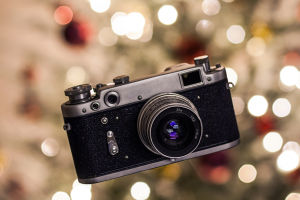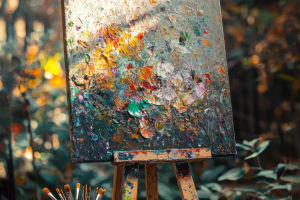
Hello, photography enthusiasts! Capturing stunning landscape photos requires more than just the right location and timing.
To truly bring out the beauty of nature, having the right equipment is key.
Whether you're an aspiring photographer or a seasoned pro, having the right tools can elevate your landscape photography to the next level. In this article, we'll break down the essential gear you'll need for capturing breathtaking landscape shots!
1. Camera Body
The camera body is the foundation of your landscape photography setup. For beginners, a DSLR or mirrorless camera will offer plenty of features and flexibility. DSLR cameras like the Canon EOS series or Nikon D series are great for versatility and image quality.
2. Lenses for Landscape Photography
One of the most important factors in achieving great landscape shots is selecting the right lens. For landscapes, wide-angle lenses are typically preferred. These lenses allow you to capture expansive views and include more of the scene in your shot. A 16-35mm or 24-70mm lens is a popular choice for landscape photographers, as it provides flexibility for wide shots and tighter compositions.
If you're interested in getting more detailed or telephoto shots, you might consider a 70-200mm lens, which lets you zoom in on distant subjects, such as mountains or wildlife, with clarity and precision. A lens with a wide aperture (f/2.8 or f/4) will help you capture stunning shots in low light conditions, such as during sunrise or sunset.
3. Tripod for Stability
When shooting landscapes, a tripod is essential. Landscape photography often involves long exposure times, especially in low light or when capturing motion (like waterfalls or the movement of clouds). A tripod ensures stability and prevents any blur from camera shake, which is crucial for sharp, clear images. Opt for a sturdy, lightweight tripod that can handle your camera setup comfortably without being too bulky to carry during hikes or outdoor adventures.
4. Filters for Enhanced Photos
Filters are an often-overlooked yet incredibly important piece of gear in landscape photography. Polarizing filters help reduce reflections, enhance the color of the sky, and increase contrast in the clouds. This is particularly useful when photographing water or wet surfaces.
Neutral density (ND) filters are another must-have, especially for those who enjoy long exposure shots. ND filters help reduce the amount of light entering the lens, allowing for longer exposure times even in bright daylight. This is great for creating smooth effects in waterfalls, oceans, and rivers, giving them a silky, motion-blurred look.
5. Remote Shutter Release
A remote shutter release or camera remote is a small but powerful tool for landscape photographers. This accessory allows you to take a photo without physically touching your camera, which can introduce small vibrations and affect the sharpness of the image.
Remote shutters are particularly helpful for long exposures, where any movement could distort the final result. Many remote shutters are wireless, and you can also use smartphone apps to control your camera remotely, making it even easier to capture the perfect shot.
6. Extra Batteries and Memory Cards
Long landscape shoots often mean you’ll be out for hours, sometimes even days, capturing the perfect shot. It’s important to have plenty of extra batteries on hand to ensure your camera doesn’t die in the middle of a shoot. Landscape photography, especially when shooting in raw format, consumes a lot of battery power. Always pack several fully charged batteries before heading out.
Memory cards are equally important, as large raw files can quickly fill up a card. Having multiple high-capacity memory cards is essential to ensure you don’t run out of space during a shoot. Look for high-speed SD cards with plenty of storage, such as 64GB or 128GB cards, to store your images safely.
7. Lens Cleaning Kit
Outdoor conditions can be unpredictable. Whether you're photographing through mist, fog, or during a rainstorm, your lens can easily become dirty. A lens cleaning kit is vital for keeping your lens free from dust, fingerprints, or water spots that could ruin your shots. Make sure your kit includes a microfiber cloth, a lens brush, and a lens cleaning solution. Regularly cleaning your lens will ensure sharp and crisp images with no distractions in the frame.
8. Backpack for Gear
When heading out to capture landscapes, you’ll need a reliable and comfortable way to carry all your gear. A well-designed camera backpack provides the perfect solution. Look for one with adjustable dividers to safely store your camera body, lenses, filters, and other accessories.
Great landscape photography goes beyond just having the right location or timing—it’s about having the right equipment. From the camera body and lenses to tripods, filters, and cleaning kits, each piece of gear plays a vital role in helping you capture beautiful, sharp, and dynamic photos.
Equip yourself with the right gear, and you’ll be ready to create stunning landscape photos that showcase the world in its full glory!
THE ONLY Essential Gear for Landscape Photography Beginners
Video by David Johnston


